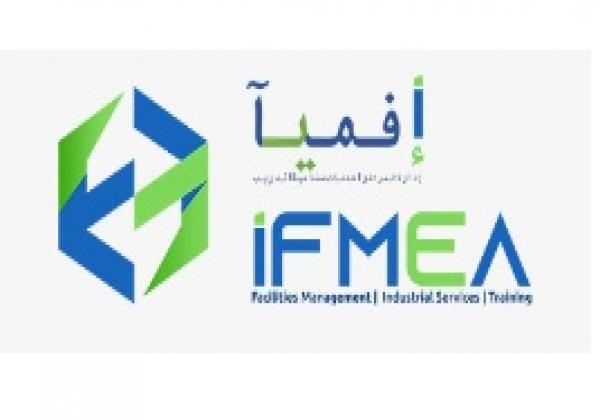Fiber Protection Sleeves Suppliers in Dubai,UAE

IFMEA
Phone: +97143296764
Emirate:Dubai, P.O.BOX:
Address:Dubai Branch : GF-01, Shams Business Park AL Garhoud , Dubai

Micronet Technology
Phone: 0505648497
Emirate:Dubai, P.O.BOX:182415
Address:Office 102, Rifa Old Building, Opp Palm Beach Hotel, Khalid Bin Waleed St, Bur Dubai

LAN GUARD
Phone: +971 2 6329170
Emirate:Abu Dhabi, P.O.BOX:
Address:M01 Floor, Princess Jewellery Building, Khaleefa Street, Abu Dhabi, United Arab Emirates

Microlink networks llc
Phone: +97145561557
Emirate:Dubai, P.O.BOX:
Address:Boulevard Plaza Tower One, Level 3, Downtown Dubai, United Arab Emirates

Bits Secure IT Infrastructure LLC
Phone: +971 43282444
Emirate:Dubai, P.O.BOX:3282444
Address:SUNTECH Tower - Office 903 - Dubai Silicon Oasis - Industrial Area - Dubai - United Arab Emirates
Fiber optic cables are delicate and require protection from physical damage, environmental factors, and other potential hazards. Fiber protection sleeves play a crucial role in safeguarding these cables, ensuring reliable signal transmission and long-term performance.
Types of Fiber Protection Sleeves:
Heat-shrink sleeves: These sleeves are made of a thermoplastic material that shrinks when exposed to heat. They are typically slipped over the fiber optic cable and then heated with a heat gun to conform tightly to the cable's diameter. Heat-shrink sleeves offer excellent protection against dust, moisture, and abrasion.
Cold-shrink sleeves: These sleeves are pre-expanded and simply slide over the fiber optic cable. They contract and provide a snug fit without requiring heat application. Cold-shrink sleeves are convenient for use in environments where heat cannot be used, such as near sensitive equipment.
Split sleeves: These sleeves consist of two halves that snap together around the fiber optic cable. They are easy to install and provide quick access to the cable for inspection or maintenance.
Splice protectors: These sleeves are specifically designed to protect fiber optic splice points, which are the connections between two fiber optic cables. They typically have a larger diameter than standard protection sleeves to accommodate the splice enclosure.
Benefits of Using Fiber Protection Sleeves:
Physical protection: Safeguard fiber optic cables from scratches, cuts, crushing, and other physical damage that can disrupt signal transmission.
Environmental protection: Shield cables from dust, moisture, UV radiation, and extreme temperatures, which can degrade signal quality and cable lifespan.
Strain relief: Prevent excessive bending or pulling forces on the cable, reducing the risk of fiber breakage.
Improved aesthetics: Enhance the appearance of fiber optic cable installations by providing a clean and finished look.
Choosing the Right Fiber Protection Sleeve:
When selecting fiber protection sleeves, consider these factors:
Fiber optic cable diameter: Choose sleeves with a diameter slightly larger than the cable to ensure a snug fit without being too tight.
Application environment: Select sleeves suitable for the environmental conditions, such as temperature range and exposure to moisture or UV radiation.
Ease of installation: Consider the installation method (heat-shrink, cold-shrink, or split) based on your preferences and available tools.
Durability: Choose sleeves made from high-quality materials that can withstand wear and tear over time.
Types of Fiber Protection Sleeves:
Heat-shrink sleeves: These sleeves are made of a thermoplastic material that shrinks when exposed to heat. They are typically slipped over the fiber optic cable and then heated with a heat gun to conform tightly to the cable's diameter. Heat-shrink sleeves offer excellent protection against dust, moisture, and abrasion.
Cold-shrink sleeves: These sleeves are pre-expanded and simply slide over the fiber optic cable. They contract and provide a snug fit without requiring heat application. Cold-shrink sleeves are convenient for use in environments where heat cannot be used, such as near sensitive equipment.
Split sleeves: These sleeves consist of two halves that snap together around the fiber optic cable. They are easy to install and provide quick access to the cable for inspection or maintenance.
Splice protectors: These sleeves are specifically designed to protect fiber optic splice points, which are the connections between two fiber optic cables. They typically have a larger diameter than standard protection sleeves to accommodate the splice enclosure.
Benefits of Using Fiber Protection Sleeves:
Physical protection: Safeguard fiber optic cables from scratches, cuts, crushing, and other physical damage that can disrupt signal transmission.
Environmental protection: Shield cables from dust, moisture, UV radiation, and extreme temperatures, which can degrade signal quality and cable lifespan.
Strain relief: Prevent excessive bending or pulling forces on the cable, reducing the risk of fiber breakage.
Improved aesthetics: Enhance the appearance of fiber optic cable installations by providing a clean and finished look.
Choosing the Right Fiber Protection Sleeve:
When selecting fiber protection sleeves, consider these factors:
Fiber optic cable diameter: Choose sleeves with a diameter slightly larger than the cable to ensure a snug fit without being too tight.
Application environment: Select sleeves suitable for the environmental conditions, such as temperature range and exposure to moisture or UV radiation.
Ease of installation: Consider the installation method (heat-shrink, cold-shrink, or split) based on your preferences and available tools.
Durability: Choose sleeves made from high-quality materials that can withstand wear and tear over time.


